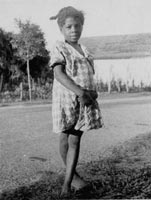|
|
 |
Models for serving gifted students
Schools utilize various methods for providing gifted students
with education directed to their needs. Programs for students in their early
childhood years train teachers to identify different forms of giftedness and employ the theme approach, in which all students
study the same theme but participate according to their strengths. Programs for
elementary and middle school students are much more common than programs for young children.
Some educators believe these students should be included in the regular classroom but regularly pulled out for enrichment
activities with other gifted students. Other educators, on the other hand, contend
that inclusion deprives these students of the opportunity to fully develop their capabilities and may adversely affect the
general education program. Consequently, some gifted and talented programs fully
separate their participants from their peers in the general education program. When
gifted students reach high school, their options include attending honors, advanced placement, and elective classes, Saturday
programs, seminars, and summer institutes. Some gifted teenagers enroll in college
classes in lieu of or in addition to secondary school. Finally, magnet schools
(schools that emphasize one area of learning, such as performing arts, science, or technology) build on students' talents
in preschool through high school (Turnbull et al., 2002).
|
 |
|

The opportunity to learn in multiple ways
Patrick, a civil
engineering major at the University of Southern California, recalls his experiences as an academically gifted student.
His first few years
of schooling were at a private school, where gifted children were not separated from regular learners. Patrick believes such a setting "requires very strong teachers who are willing to put the time in to recognize
both the more advanced students and [the] struggling students, and develop lesson plans for all of them, without showing favoritism."
"When I transferred
to the GATE program at a public elementary school," Patrick remembers, "I noticed that everyone may have passed the test
to get in, but having a high IQ doesn't mean you'll learn in the same manner as everyone else. . . . In junior high,
I had completely segregated GATE classes in every subject except physical education and band. I believe this offers
the most potential to provide gifted students with additional education, but also can result in worthless classes when bad
assumptions are made. Far too many of the teachers I've had in honors classes have had the wrong idea that since we're
'honors students', we are self motivated, well behaved, and have a drive to learn. While that can be true in a limited
sense, without a strong teacher who takes control, . . . [honors students'] standard of work can become very low.
"The best honors type classes I took in . . . high school [and] junior high always consisted of small groups
of students with not only similar intelligence levels but also the same temperaments, led by smart, hardworking teachers who
wanted to be there and tried their best to create interest in the subject matter. If nothing else, I think it was really
the small class sizes that helped, even to the point where I think that if we could reduce all classes to twenty people it
would negate the need for more advanced classes up until the later high school level, simply because teachers would be able
to spend enough time with each student and be able to meet their needs on a one on one basis.
"From what I saw
it was always the teachers who [gave us] the opportunity to learn in multiple ways that had the most success. I personally learn best by going out and trying things. If
a teacher is just lecturing I'm not likely to learn, but if I get the very basics explained to me, then go out and try a couple
problems, then come back and have someone to ask my questions to, I do much better. Other students I know could actually
pay full attention to lectures and learn it all there."
|
 |
|
|
|
 |
|
Assessment Practices
Gifted and talented students are identified and assessed
through a process of observation, screening, referral, and nondiscriminatory evaluation procedures and standards. In the screening period, parents and teachers observe that a student possesses unusual creativity, insightfulness,
curiosity, high vocabulary, specialized talents and interests, a love of learning, boredom with school, superior performance
on assignments, and/or high test scores. From here, the student is referred to
a Nondiscriminatory Evaluation Team, which formally assesses the student for giftedness.
This team determines the child to be gifted and needing special education services if he or she:
-
scores in the 97th or 98th
percentile on individualized intelligence or achievement tests
-
exhibits remarkable creativity in class work or
creativity tests
-
receives high scores in checklists of gifted characteristics
completed by teachers, parents peers, or others who know the child well
-
performs a cut above classmates in the curriculum
-
demonstrates outstanding talent in visual or performing
arts
-
shows strong leadership abilities in academic or
extracurricular activities and/or
-
appears gifted through direct observations
(Turnbull et al., 2002)

Under-representation
of minority students
Unfortunately, minority students are under-represented
in programs and services for gifted and talented students. One reason for this
is the culturally-constructed nature of giftedness. In other words, personal
qualities that are highly valued in some cultures are barely recognized in others. Culturally
diverse students may exhibit signs of giftedness which teachers fail to identify because their knowledge and experience does
not lead them to recognize the signs as such. Discrimination against gifted minority
students can also happen in the evaluation process. If an evaluation does not
include documentation of material produced by a student as well as IQ and creativity test results, it risks discriminating
against students from diverse populations. The DISCOVER (Discovering Intellectual
Strengths and Capabilities through Observation while allowing for Varied Ethnic Responses) assessment is sometimes used. A thorough tool for evaluating students' spatial, logical-mathematical, linguistic,
bodily-kinesthetic, interpersonal, and intrapersonal intelligence, this assessment allows for cultural differences and varying
problem-solving methods. (Turnbull et. al, 2002).
|
 |
|
|
|
|
|
For more information

|
| (202) 336-6129 |

|
| (410) 516-0337 |

|
| (212) 692-0704 |
www.gtworld.org - an on-line support community for gifted and talented individuals and those who support and nurture them
|
|
|
 |

